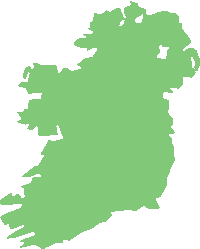 Although we all will slip into talking about this fine book as the BTO Atlas it is the Atlas of the BTO, Scottish Ornithologists’ Club and Birdwatch Ireland. And it is the People’s Atlas too!
Although we all will slip into talking about this fine book as the BTO Atlas it is the Atlas of the BTO, Scottish Ornithologists’ Club and Birdwatch Ireland. And it is the People’s Atlas too!
Ireland, north and south of the border, is an interesting place – as revealed many times over in this Atlas.
A range of farmland and woodland species have higher relative abundance in the island of Ireland than they do in Britain, eg Robin, Wren and wintering Redwing. I guess that this is largely because Ireland is more rural, has a lower human population density and a generally different agriculture from that of Britain (and it rains a lot, too).
In addition, there are species which not only have higher abundance in Ireland but also have increased (and maybe are still increasing) in abundance in contrast to what they are doing in Britain. Such species include Bullfinch, Lesser Redpoll, Pied Wagtail, Song Thrush and Starling (and others).
Little Egret and Mediterranean Gull are two of the success stories of this Atlas – and Ireland shares in their successes. So too, and maybe more interesting still, is the Great Spotted Woodpecker which colonised in 2006 and now is found as a confirmed breeder in 2% of Irish 10km squares – mostly along the east coast but spreading into the interior too. Now I know that Great Spots can cross the North Sea to Britain regularly, so they aren’t complete wimps when it comes to flying over the sea, but I had taken it almost as a natural law that woodpeckers don’t live in Ireland – but now they do! Will we see them colonise the Inner Hebrides and the Western Isles, and Orkney too? I now guess we will.
 But there are still those species which are common or widespread in Britain but absent from Ireland. Although the Great Spotted Woodpecker has left their ranks they still include Marsh Tit and Willow Tit, Tawny Owl, Green Woodpecker and the even more puzzling (because they are long-distance migrants) Tree Pipit, Pied Flycatcher and Redstart.
But there are still those species which are common or widespread in Britain but absent from Ireland. Although the Great Spotted Woodpecker has left their ranks they still include Marsh Tit and Willow Tit, Tawny Owl, Green Woodpecker and the even more puzzling (because they are long-distance migrants) Tree Pipit, Pied Flycatcher and Redstart.
Ireland’s a great place for corvids – all of them (well except Carrion Crow which is replaced by the increasing Hooded Crow).
Bewick’s Swans hardly bother with Ireland these days.
There is certainly a PhD or two to be had by looking carefully at these data. I haven’t looked carefully at them, I’ve just skimmed through the pages, occasionally going ‘Cor! Look at that! Well, I never!’. You’ll do the same. And you’ll love doing it. If only we had the maps for northern France in here too…!
PS Don’t go to Ireland unless you like Linnets (which I don’t) – their abundance is increasing there in contrast with the situation across Britain.
[registration_form]
So you’ll never venture west across The Sheugh again, Mark, for fear of mobs of Linnets? Ach well.
The tale I was told before I left my native Nor’n Ire’n’ over 25 years ago, in search of gainful employment, was that the bulk of Ireland’s native woodland had been cleared by the 11th century so most woodland bird species had vanished in consequence; but I’ve never seen anything definitive to confirm or refute that theory.
I think the atlas is a marvellous work with a huge amount of information contained there in to absorb over many nights and days! dipping in, one for which the authors, BTO and the field workers should get huge credit.
Lovely day today,a juvenile Hen Harrier flew along the neighbouring field.
Dennis – lucky you! I saw a Red Kite as I travelled back from Leicester races with some winnings in my pocket. And the autumn colours are looking good around here.
And don’t go to Ireland if you want to see any curlew. There has been a decline there of 96%, yes, 96%, over the past 20 years. Some of it habitat related, certainly, but as Murray Grant identified in Northern Ireland in the ’90s, predation is a major issue.
Lazywell – indeed. And before you say it, I bet you’d go to a grouse moor to see the odd curlew or two, wouldn’t you?